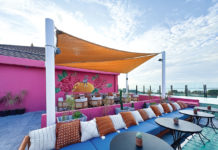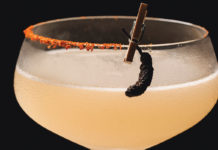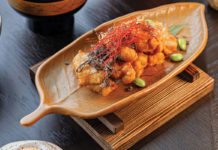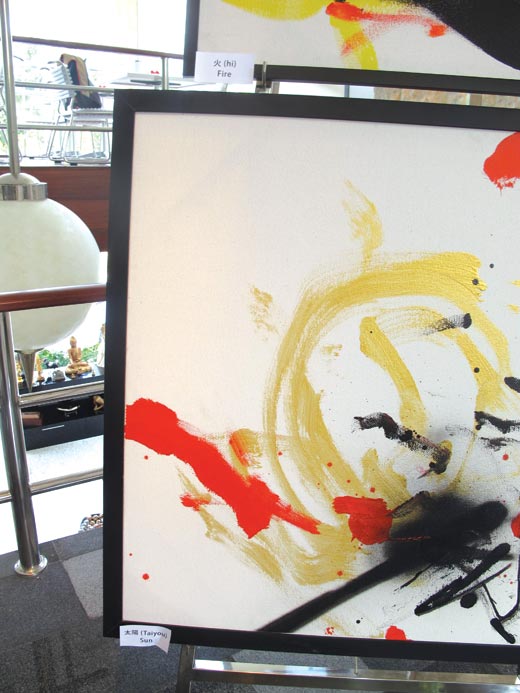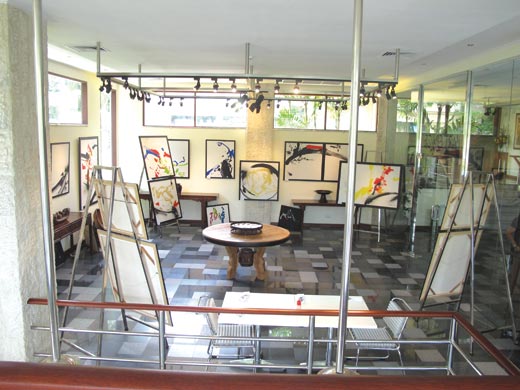Internationally renowned for his inspiring live art installations, Japanese artist Jun Inoue is a key member of the latest generation of Tokyo street artists who approach this classic practice by combining modern Zen aesthetics with environmental interaction and Western elements of graffiti.
With a loyal following that has taken him from Paris Fashion Week to the new Artspace at Ubud Adventure Centre in Bali, Jun’s American-inspired graffiti art can be seen on skateboards and sneakers, in the retail stores of Nike and splattered on live models working the catwalk for Tokyo fashion designer Mihara Yasuhiro. His current collection in Ubud is blessed with bold yet simple names in both English and Japanese such as Wind (Kaze), Moon (Tsuki), In the Water (Mizu No Naka), and Inside the Heart (Kokoro No Naka). Simple strokes of black are highlighted with red and yellow, creating intriguing, no nonsense scenes that are perfect for modern minimalist aesthetics.
From an early age, Jun says he made cars, trains and trucks from cardboard, and as a teenager he evolved his craft into graffiti. In high school, Jun was influenced by American youth culture, including hip-hop music, fashion and even words, and his graffiti reflected this. It wasn’t until he studied art after high school that he began to identify with his Japanese roots and incorporate his culture into his art. More than a combination of styles, Jun’s art is a song and dance – literally. Before beginning a new work, Jun limbers his body in preparation, puts a hip-hop track on and dances for at least five minutes in front of his blank canvas. He then runs towards the canvas and attacks it with spray cans, rollers, brushes and splatter. It’s a theatrical performance that often takes place before an audience, and it’s one that is intuitive and immediate.
Jun’s work is a combination of two very different styles of art – shodo (Japanese traditional calligraphy) and raku-gaki (graffiti) – culminating in energetic, vivid and edgy pieces. By uniting the two styles, Jun has re-translated and revived traditional Japanese art to Westerners and the younger Japanese population. To see more of Inoue’s art, visit www.juninoue.jp


